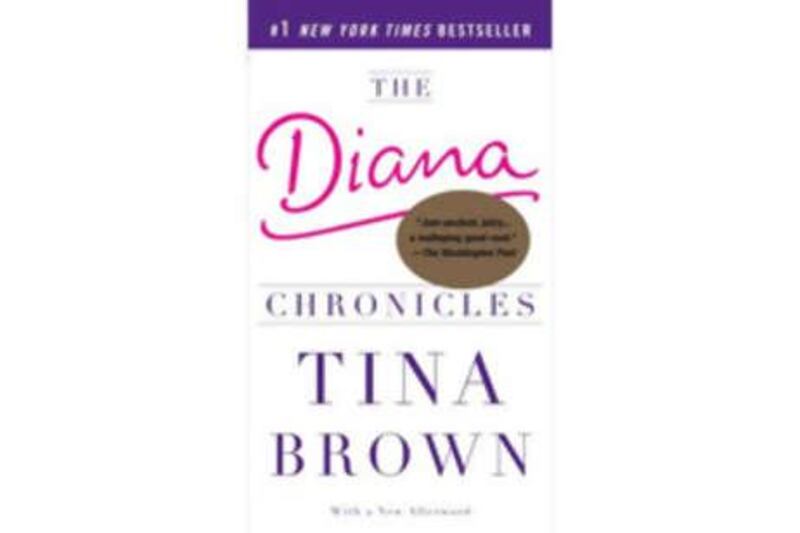The Diana Chronicles Tina Brown Arrow Dh35 Despite the furore that greeted its hardback publication, this is a book whose heart has always been bound between soft covers. For all that it both fans and damps down the controversy that continues to blaze around Diana's life and death, it is first and foremost an audaciously readable study of the "people's princess". Yes, it's full of slyly spot-on observations about celebrity, class and the media, but it moves at the same page-turning pace that its jacket promises.
Brown has an ear for a telling quotes and an eagle eye for era-capturing - and frequently label-toting - detail. And then there's her contacts book, which has yielded interviews with previously untapped sources; from Charles' ex-girlfriends to John Travolta, who reminisces about his 1985 turn on the White House dance floor. As a former editor of Tatler, Vanity Fair and The New Yorker, Brown is also uniquely positioned to tell the story of Diana as a media construct, which is precisely how she sees her.
Stripping away the already studied innocence of the 19-year-old bride, Brown reveals a determined young woman who set out to bag Charles' title and met him for two prenuptial trysts aboard the royal train. Yet her big relationship, Brown suggests, was not with Charles and the House of Windsor but with the media. Hobbled by a scheming grandmother, a mother who was a kind of aristocratic Desperate Housewife, a stepmother she loathed, a mother-in-law who happened to be the Queen, and a famously crowded marriage, Diana fled the palace gates for the world of red carpets and flashbulbs. Wooing the paparazzi, she found her own power, little intuiting that this same force would later turn on her with such catastrophic results. From "Shy Di" to "Diana the Hunted," Fleet Street photographers "lived for - and on - Diana's smile."
Diana's brother, Earl Spencer, says that her infatuation with the camera began in childhood. After their parents' bitter divorce, their father won custody but found that his only way of showing his children affection was by photographing and filming them. As Brown puts it, "Diana grew up associating the camera with love." It may have been Diana's eating disorders that drove Charles back into the arms of Camilla Parker Bowles, but neither the Prince nor his mistress - nor anyone else, for that matter - emerges from this biography unscathed. Charles, for instance, is depicted as a "toxic bachelor". As for the woman who would eventually become his second wife: "If you slapped an Edwardian-style picture hat on the head of Camilla Parker Bowles, you would be struck by her resemblance to Prince Charles' adored nanny," Brown assures us.
Yet for all its cheek, this is a book that delves beyond the stereotypes, even managing to peer past Prince Philip's boorish public persona to glimpse a deeper, more sympathetic man. As for Diana's romance with Dodi Al-Fayed, Brown depicts it as a kind of "relapse" intended primarily to irk the Royals. In the long-term, she suggests, the 37-year-old had her heart set on a fresh start in America with Theodore J Forstmann, the billionaire former owner of Gulfstream.
Back in 1985, Brown wrote a Tatler cover story on Diana entitled The Mouse that Roared. While other biographies of the past decade have tended to cast her subject as either saintly victim or vindictive sinner, intent on toppling the monarchy, she manages to pick her way through these warring camps and find a woman who was neurotic and calculating, yet human all the same. She never quite loses sight of the mousy, bereft child who grew up to become a fairy-tale princess. Tartly told, this sad, tinselly story reads like a compelling modern morality tale.





